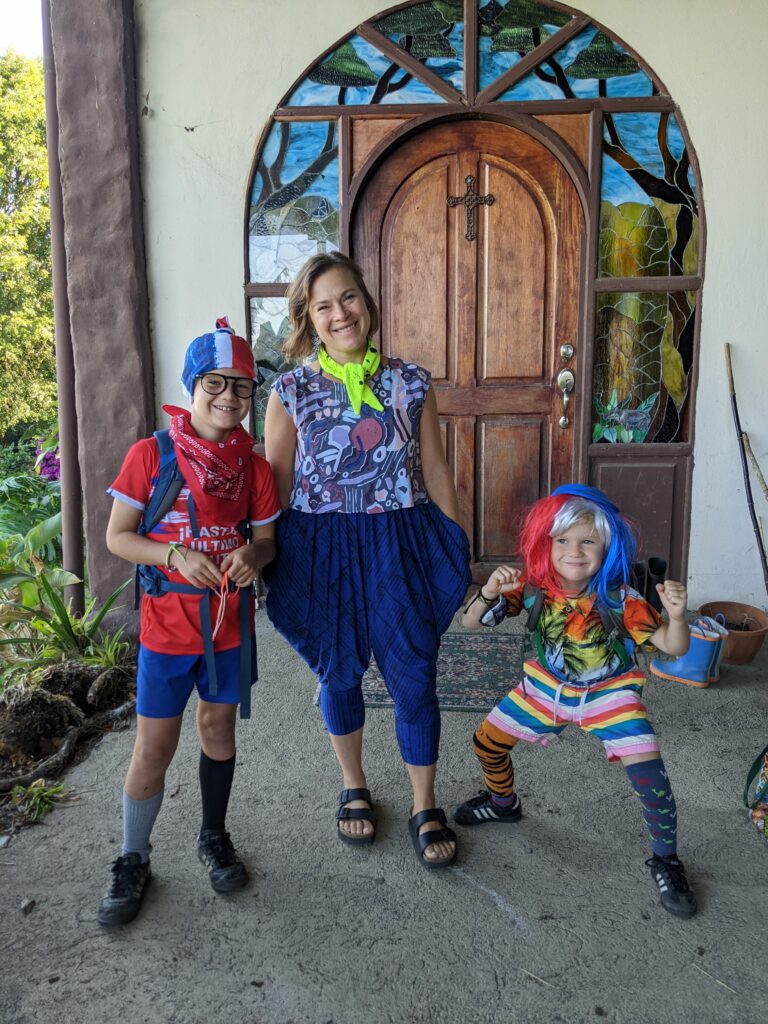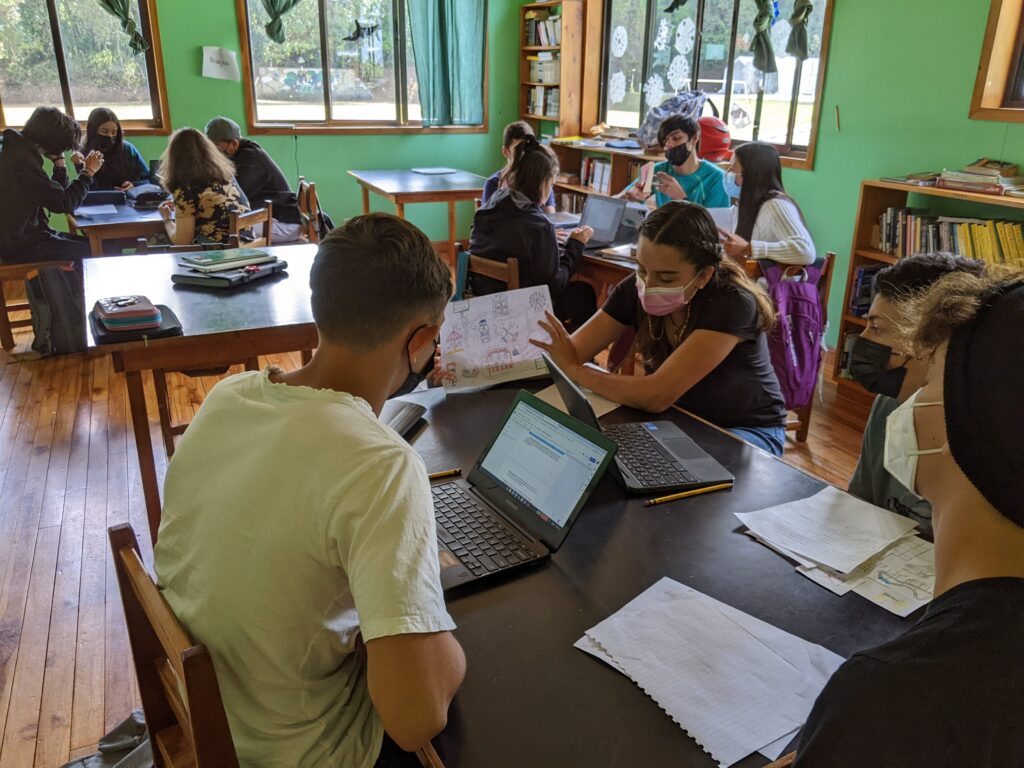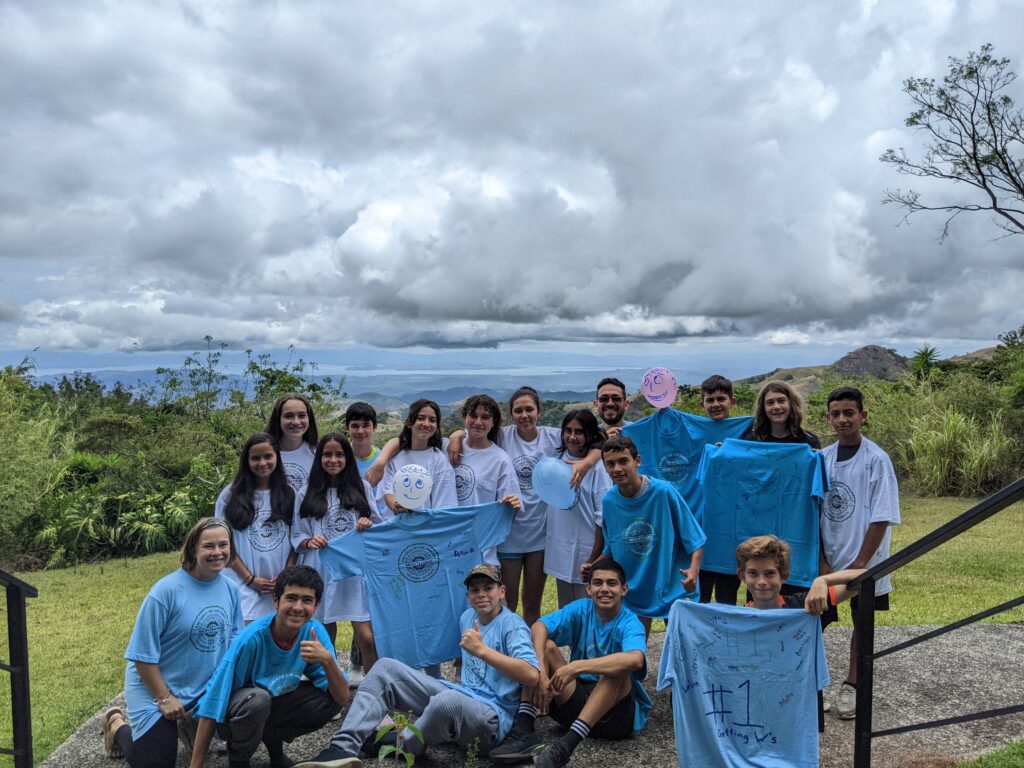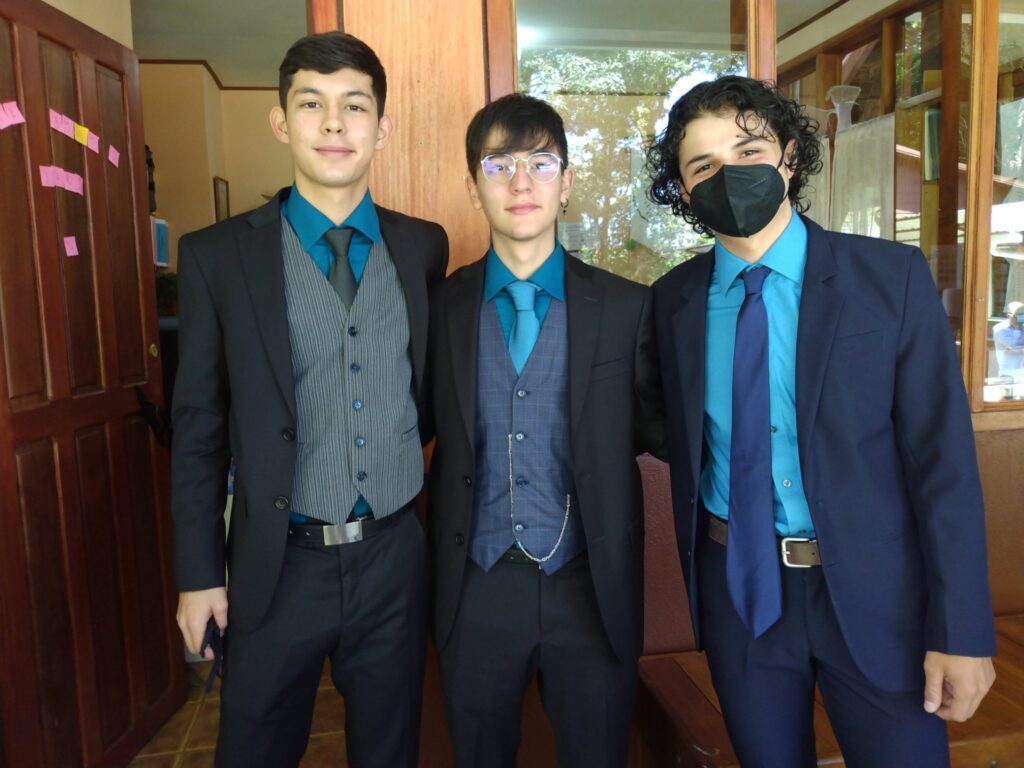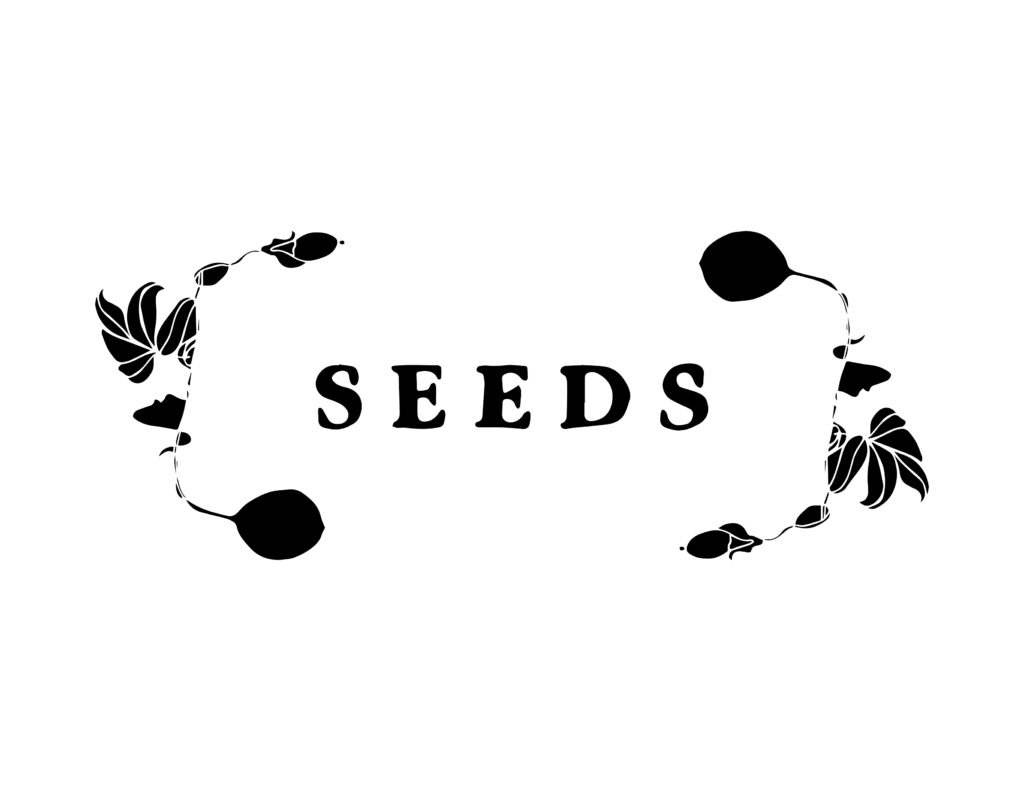Seeds is now also available in a PDF format that can be printed, saved, or shared. Click on the link above.
This issue of Seeds is entitled “Coming of Age During COVID”, the title of the final assignment Lacey Boland gave her students. Several of those student creations are included along with her discussion of the assignment and the enthusiastic response of students. Lewis Steller is introduced in an interview by J. Valverde Pacheco, and Liza Ewen offers a brief recap of the last year and the lessons it brought. Together these pieces reflect a stalwart facing and overcoming of the difficulties and challenges presented by COVID, stories of growing and maturing, and the joy, thankfulness, and blessing of being able to learn together in person.
The next issue in September will be on the topic of How God’s Spirit Moves. We are looking for essays, poetry, interviews, artwork, photography, multi-author discussions, etc., on how people experience God light and/or movement in their lives. It doesn’t have to be deep, theologically pure, or spectacular—often God’s spirit moves in small and subtle ways. It just has to be true for you. Anyone may send submissions to the Seeds e-mail address: seedsmfm@gmail.com. Thank you for sharing your thoughts and experiences with the community of readers.
Table of Contents
- Taking a Leap of Faith: Introducing Lewis Steller, an interview by J. Valverde Pacheco
- Building School by Welcoming Change by Lacey Boland
- Our Family’s Empty Hotel by Santiago Gutierrez Castro
- Life Is about Change by Milena Alvarado Morena
- Escaping through Art by J. Valverde Pacheco
- Coming of Age During COVID, a video diary by Camila Herrera Jiménez
- The Journey Back to School by Liza Ewen
Taking a Leap of Faith: Introducing Lewis Steller
An interview with J. Valverde Pacheco
A new culture, new home, new job, and new challenges—all during a global pandemic.
“We took the leap of faith,” explained Lewis Stellar in describing how it felt to leave his home and move to an entirely new community, culture, and country. Being a thirty-two-year-old trans man born in Massachusetts, moving to a new and different country can be difficult and challenging. Lewis recently completed his first year as a science teacher in the Monteverde Friends School (MFS). Coming to Costa Rica with no prior visits and not much knowledge about the country was both scary and exciting. But despite all the difficulties and challenges, sometimes taking the leap of faith can be worth it. The following interview has been edited for clarity.
How did transferring to a new community during a global pandemic affect your ability to fit in here?
“Fitting into a community is already difficult, but especially so when there is a new language to be learned and to be used. Because working at the MFS focuses on the community a lot, making friends within the school is easy, but making friends with people outside the community of MFS was more difficult, especially because of COVID. COVID made it harder to go to social events and gatherings to meet new people and make connections, but COVID also did something good: it helped to make everyone realize that I wasn’t just a tourist. Monteverde, and Costa Rica in general, are famous for their tourist attractions, so the people here tend to see someone from the outside and assume that they are tourists. But with COVID keeping the tourists away, it was easier for people to see that I was sticking around.”
Did your gender and sexuality affect any of those struggles or increase them?
“Being trans and trying to migrate to another country is super hard. Not only is it difficult legally, but it’s also scary not knowing what they would say at the border, for example, and what they would think or do. The community of Monteverde is small; you see everyone you know just walking to the store and this makes it very difficult to deal with transphobia and homophobia when it appears because it’s not as if you can just walk away and never see them again. Although this also made for close relationships with members of the LGBTQ+ community here because to everyone it felt like we watched each other’s backs and kept each other safe.”
How difficult was it to leave your past home?
“In many ways, it felt as though I moved away much earlier during COVID because I hadn’t been able to do the things I loved doing with people for about a year before I left. I still miss my friends, but our connections were already happening primarily online with calls and video games, so it was easier to transition. Also, the fact that I had been planning to leave for a long time made it easier to go to a new place.”
How did you discover Costa Rica, and what about it made you want to change your life so suddenly?
“I first found out about Costa Rica through a friend I knew from the queer community in Seattle who encouraged me to go there. Later, the same friend sent the information about MFS job opening for the director position, and I saw that there was also an opening for a science teacher. So, after researching and learning that their beliefs were similar to my own, I applied for the job. The interesting part is that, at the same time, I applied to a fancy school in Silicon Valley. It was interesting to see that on one hand it felt like a high salary in California was calling me, but on the other hand, God was calling me to Monteverde. I feel confident that I made the right choice.”
Building School by Welcoming Change
by Lacey Boland
Secondary English teacher at Monteverde Friends School
With just three weeks until the end of the school year, I presented MFS 9th-12th grade students with their final writing assignment of the year in English. I wanted to know: What has it been like for you to come of age during the Coronavirus? I invited them to look back on the past three years of pandemic learning and living, and we explored resources from The New York Times, which had put out a call for submissions on this very topic that asked respondents to consider: How do you think the pandemic has shaped and will continue to shape you and your generation? Who are you now? How will you remember the pandemic?
I asked students to choose a medium and welcomed a variety of expressions. They could write essays, create infographics, record videos, make art, write poetry, or perform songs.
The students got to work. They began to outline, write, and record original and hilarious rap verses, draw comic panels, and reflect. And then, in typical pandemic fashion, with only two weeks left until the end of a challenging and rewarding school year, I got COVID and was forced to quarantine. I missed six out of the final, precious ten days of school, and missed out on important goodbyes and closure.
When looking back on three years of pandemic teaching and learning, this was just one of the many losses that have piled up quickly.
As the submissions trickled in, I read them from my sickbed, delighting in my students’ stories, their humor, their creativity, their vulnerability, and their meaning-making. This generation of teenagers has been through a lot and their resilience and ability to make sense of the world, despite these challenging times, brings me hope.
Over the last few weeks, as my family and I began the process of moving back to the United States (after a year in Monteverde that’s gone by so quickly it’s left me breathless), I have been reading Emergent Strategy by adrienne maree brown, a writer who shines a light on how to work toward a more just and loving world in times of crisis and immense and ongoing grief by embodying the change we long for. Saying our goodbyes and grieving the close to an incredible year in Monteverde, I’ve taken solace in brown’s wisdom, which is drawn from a range of thinkers, including science fiction writer Octavia Butler, whose words from Parable of the Sower serve as an important keystone. Butler writes, “All that you touch you change. All that you change changes you. The only lasting truth is change. God is change.” Brown expands on Butler’s lines and believes change is inevitable, unavoidable, and therefore should be embraced. “Change is definitely going to happen,” brown writes, “no matter what we plan or expect or hope for or set in place. We will adapt to that change, or we will become irrelevant.” Brown points to the natural operating systems of the universe as a model for the kind of welcoming of change that’s needed “as opposed to trying to barrel through and against all the change, trying to best nature.”
We’ve lived through great change these past three years. Individually. Collectively. We’ve learned to adapt. To isolate. To mask. To accept and move on from our losses–big and small. We’ve also come together in small and profound ways. Change is hard and we’ve embraced it, embodied it, learned from it.
I first fell in love with Monteverde Friends during a visit in 2019. As soon as we set foot on the MFS campus, my husband Ethan and I knew that if given the opportunity we would return to this school. We loved the painted quotes, hands and footprints from students past and present that decorated the classroom walls as well as the colorful tires and massive slide on the playground. Three years later, when we arrived during the third year of the pandemic, schooling was beginning to feel more hopeful and a bit less restrictive, but I learned quickly that MEP’s restrictions were much more stringent than the protocols in place in the US. Thankfully, MEP had already done away with the rule requiring children to enter the classroom in a strict, numbered order (preventing students from crossing paths in the classroom). However, distancing requirements forced us to start the year on different campuses, dividing resources, personnel, and our student body. The MFS campus would be home to primaria and colegio would open on Creativa’s campus.
When I look back on those months on Creativa’s campus, I am grateful to have been able to teach in such a beautiful place, but it was also hard work to build a school from scratch while trying to support what has made the MFS community so special and unique. I imagine looking down on all of us from above, most of the faculty brand new to MFS, plus staff and parents, swarming the Creativa campus in a line like leaf cutter ants up the steep hill as we hauled our supplies: tables, hand sanitizer, desks, more hand sanitizer, and books–so many books! We established a little library in one of the cabinas. We measured and rearranged the seating. And we became accustomed to all of the daily interruptions from our forest friends. Howler monkeys joined us for an exuberant and raucous first Meeting for Worship in the comedor. Pizotes regularly attended lunch and army ants helped us maintain clean floors. The students were happy to be back in person and we began the work of building our learning community and getting to know one another–masked, at a distance, and in a new place. At that point, we took it for granted that this is the way school works to maintain safe, in-person learning. We stretched ourselves however we could to create new and exciting learning opportunities for students. We hiked to MFS to see our siblings. We worked to maintain protocols. We made it work, together.
In December, MEP’s distancing guidelines shifted and we learned that we would be able to return to the MFS campus. For longtime MFS students and faculty, this was joyful news, but for the students who had joined us in 2020 when the Creativa closed, this marked another change, another adjustment they would need to make. It was bittersweet, even a little scary. Again, we worked like ants to disassemble all that we had built at the Creativa. I’ll always remember the line of students carrying the stumps we used for seating at lunch so that we could eat safely together while maintaining social distance.
After Christmas break, we were at it again: developing and practicing the new protocols of coming together to learn, this time at MFS. In English, we read books, wrote papers, performed poetry, held class discussions and debates, but all the while we were also engaged in the more invisible work of learning to come together, rebuilding a community that was both old and brand new. We began taking trips. Guest speakers attended classes. The caminata, dia deportiva, and career day were small openings that signaled a return to normalcy, but always under the threat of the latest surge–first Omicron, then the uptick in numbers due to spring break travel. We remained vigilant and constantly troubleshooting.
COVID is a great disruptor. Responding to these disruptions when working in a school requires so much exhausting work. But with all the “givens” removed, it has also forced us to decide anew, reimagine, and reenvision. We can embrace change, we can experiment, and we can also return to our beloved traditions, knowing now exactly what they mean to us. Toward the end of the school year, we were able to return to all-school assemblies. As a newbie, I was surprised to see how all of the teachers, staff, and students fit easily into the meeting room. Jeynor, the facilitator for the first meeting, had asked students to sit with their grade partner siblings. After a moment of silence and some announcements, we gathered outside for the first game of Octopus Tag of the year—an important tradition I had heard about since August. We headed to the cancha and, with much laughter, we ran–all together. I’m humbled by the hard work of the faculty, staff, and students this year. While we don’t always carry stumps between campuses in a “regular” pre-pandemic teaching year, teachers and staff are always engaged in the work of building school. I feel so lucky to have gotten to do this work alongside the dedicated and talented staff at MFS, to help MFS carry on, and I look forward to staying in touch and seeing how the community grows, deepens, and marches on.
Our Family’s Empty Hotel
By Santiago Gutierrez Castro
My family operates a hotel in Monteverde. We were all comfortable and cheerful before the pandemic. I remember seeing our hotel, and Monteverde, full of tourists and full of life.
I was so excited for 2020. I was going to turn fifteen years old; I was going to my first concert; I was going to travel with my family—and then it all came apart. We began to hear about a virus that had started in China but at that time, we never thought it would reach Costa Rica. As the days passed, however, cases eventually began occurring in our country. An image that will stay with me from this is of the tourists in our hotel getting really scared and unsettled as the virus spread. Soon that unsettled feeling spread to us as well. The tourists began leaving little by little until eventually our hotel was empty.
I remember one night during a family dinner when we had a hard conversation about what we were going to do with the hotel, with all the workers, and everything in general. The decision was made to close the hotel.
One vibrant summer day in April, we went to the hotel to do a bit of cleaning and maintenance so it wouldn’t seem so abandoned. I cleaned and swept all the dust from the reception area. It was depressing seeing all that dust and hearing the silence. When we had finished our chores, we gathered in the parking lot and noticed the perfect weather, animals running around and birds singing, and we talked about how hard it was to see the hotel with no one in it—not a single soul. We felt a lot of uncertainty; we did not know what was going to happen next. I felt unmotivated and brokenhearted to see the family business that we had put so much work into so deserted, so empty, so abandoned.
We began receiving some reservations again for May. We were relieved and started to become more hopeful to see our business reopen. We went back to the hotel and started deep cleaning it again, but this time with much more motivation than before. We gathered all our workers and put them back to work again.
Today, I recognize how much the pandemic helped us to grow. For me personally, it was an opportunity to learn to stop and be grateful for what we have and not be so greedy. Also, it helped me to realize that family is always first, no matter what. But most importantly, it helped me appreciate the things we have and the people I am lucky to have around me. I will always remember the pandemic with a feeling of nostalgia because of how much it helped me to grow as a person. But I will never forget how stressful it was for all of us.
Life Is about Change
By Milena Alvarado Morena
COVID-19 changed the whole world. Since the beginning of this pandemic season, we have adjusted. We were forced to learn how to protect ourselves, learning new sanitation protocols to protect ourselves and others. For the first few days, stores were saturated with people buying food and important things to make it through these early days of quarantine. On WhatsApp, I saw reports from different groups saying that PriceSmart was running out of toilet paper and other essentials like masks.
During this two-year period, we lost close friends and family members, because of the pandemic or for other reasons. We lost jobs, businesses, investments, savings, cars, and other more important or even random things. Fortunately, things have been changing. With arrival of the vaccines, normal life is returning. It’s been slow but it is coming. As humans, we all need to learn to live a normal life knowing that coronavirus still exists. COVID can’t continue to keep us from being free as human beings. Life is about changes. We need to adapt to all changes in our lives—big or little.
The school I originally attended was called the Cloud Forest School, but it was forced to close because of the pandemic. This was a sad moment in my life because I didn’t know what was going to happen with my education. I spent eight years of my life in the same school, so it was hard to leave that campus. Fortunately, I was able to apply to be a student at the Monteverde Friends School. I submitted some papers and works the school required for admission. It was hard because it consisted of writing essays in both languages. Once I was accepted, I felt so happy because I was going to continue receiving English as a second language, but also because I was going to continue with some of my friends from the Cloud Forest School who had also applied to start ninth grade at this school.
In the beginning, I learned virtually at MFS. It was hard to spend all day taking classes and completing homework on a computer. Then in August 2021, I started school in person and got to see my friends again. I was happy about this because I had waited more than a year for this moment. The best part was that MFS was meeting at the campus of the Cloud Forest School—using the now vacant classroom cabins so that we could maintain social distance. At the end of the first semester, our teachers told us that the second semester was going to begin back at the Friends School campus because the ministry of education had eliminated the distancing requirement. I was not happy with this information. It was going to be yet another change, another new experience.
I arrived at the MFS campus in January 2022. I arrived in a car with my dad and my friend of many years, Camila. I felt different. I knew I was coming to a place I’d already been to before, but never for classes. As soon as we got out of the car, I saw little kids to my left and the big library on my right. I noticed that different vibes were coming to me because of this place. Changing campuses was the moment when my study experience changed. MFS was a smaller campus, so we were closer to the smaller kids. The Quaker philosophy of the school was more obvious now that we spent time in silence each week in the Quaker meeting room instead of the dining room at the Cloud School campus. The meeting room is surrounded by woods. On one side, there is a wall of windows looking out on a small section of the rainforest; on the other side is the fifth and sixth grade classroom. On the other side of this section of the forest is the Quaker cemetery. Those are the bigger feelings of Quakerism and our community, like finding peace in nature because the cemetery is surrounded by nature and an open green space near the public street.
Personally, this pandemic has changed my life in a lot of different ways. I lost my uncle to COVID. I was not able to see a lot of friends and family, like my cousin who lives in another country and my friend who lives in Costa Rica but far from Monteverde. At least I was able to see her twice during this pandemic season. I miss a lot of my friends and feel sad because we can’t be together. I’ll be happy to see them again soon. I miss a lot of things from my old life but I continue with my life to see what else is coming to me. I’m happy because the plans I have for my future inspire me to continue with everything, no matter how hard it is in this current moment. At first, I thought change was only about physical change, but now I know that change can affect a person completely. During these past two years, I’ve noticed how mental changes have affected me. I feel more independent in my life, more focused on my future; my personal abilities have become stronger. I’m happy about who I am nowadays, and I feel excited for what is in my future. I noticed how losing things or people from your life is sometimes necessary to succeed in life.
Escaping through Art
By J. Valverde Pacheco
For this painting, I tried to use a new form of art I haven’t used much, and I also tried to not have a plan—no practice sketch and no time to think. I decided to use paint because I hadn’t used paint since I was very young. The feeling and memory I had while painting was that of looking outside through my window when COVID had just started. I remember the sense of feeling trapped was overwhelming but looking at the dark forest out of my window made me feel relieved and less trapped. I remember the wind slowly pushing the trees, moving them from side to side, and how the clouds would cover the bright moon and then uncover it like a bright lamp, bringing light to the dark forest.
It was difficult for everyone to live through the pandemic. But during that time, I used art as an escape. Now, after using art to survive the pandemic, and using the pandemic to improve and evolve my art, I can call myself an artist. I was always scared of the title “artist.” I still am. It can mean so much and so little at the same time, but for most people, it means that you are good at art, that you spend your energy and time in art. But that puts a lot of pressure on you. It’s like you have a metal heart that is weighing you down. But after the pandemic, I am okay with having that metal heart and at having so many eyes on my work. The pandemic changed both people and the world. It made everything feel restrained—from having to wear a mask to abiding by quarantines and social distancing. At times it felt asphyxiating. I found my escape in art and I think people who feel trapped or sad with the current world situation should also try art. It might provide an escape that changes your life.
Coming of Age during COVID
A video diary by Camila Herrera Jiménez
The Journey Back to School
By Liza Ewen, MFS Head of School
In my fifteen years as a high school English teacher, my students and I used to discuss why all stories could be considered a single story of the journey (an idea originated by John Campbell in The Hero’s Journey). Some odysseys are literal while others are metaphorical or metaphysical, but in the end, all stories can be mapped as a voyage. After all, aren’t we all just making our way through the world, putting one foot in front of the other, summoning the strength to keep going and stay hopeful, regardless of the odds we’re facing?
In so many ways, this past school year felt like an unlikely and impossible journey. We began the year with our colegio students on an entirely different campus and with administrators essentially running two schools, never quite knowing where we’d be on any given day. In January 2021, colegio students returned to campus for the first time in twenty-two months, a reunion made sweeter by being far too long in the making. In April, for the first time in over two years, all MFS students and staff gathered in the Meeting Room for Asamblea again. While the initial moments of this time together were a bit confusing (questions about where and with whom to sit rippled across the meeting), it wasn’t too long before we collectively remembered how to be together as a whole school. Connection, after all, is in our DNA, as both individuals, and as a school.
Thinking about resilience means reflecting on the importance of hope. Hope can be hard to come by as we continue to face pandemic challenges on top of the daily news of injustice, war, violence, and climate change. And yet, as any parent, educator, or Quaker knows, we must summon the courage to dare to be optimistic. We must embrace the possibility for good in each new day, despite the odds or the COVID case count, and trust in the inner light that connects us. All of us who love children and want to play a role in nurturing their minds, hearts, and futures, must see what George Fox, founder of the Religious Society of Friends and arguably the weightiest of important Quakers, described as “an infinite ocean of light and love, which flowed over the ocean of darkness.”
So, what has the last year taught us? One of its primary lessons has been the value of community and the supreme importance of sharing time and space with others. As we prepare for another school year, presumably with all of us back on one campus, I am deeply grateful for each and every opportunity to reunite and spend time with one another. While the journey to this moment has been far too long and demanding to make a simple “return to normal,” the 2022–23 school year offers the possibility of returning to something much more familiar. A feeling of belonging and connection. A chance to work, learn, play, reflect, and grow alongside one another, with the hard-earned wisdom to never take the daily experience of school for granted again.


